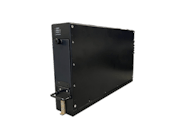The Data-Backed Possibilities of Predictive Maintenance
While data collection and algorithmic technology continues to advance and move preventative maintenance into the future, the question is now shifting to, how do you put it to use? What data is good data? And can you ever collect too much data?
Joel Klooster, who is the VP of Product Management, GE Digital, said the answer to the latter question is no – having a long, robust history of data is never a negative. However, if you’re training an algorithm to change some operations over to, you won’t want to feed it all 15 years’ worth.
“The simple answer is there’s no such thing as too long to be storing the data. Now, to be using the data, you want to make sure that your operation and the type of environment you’re changing in is relevant to the data set that you’re using to train the algorithm. You may have 15 years’ worth of data. You may only want to go use the last couple of years of data to be training the algorithms because you’ve got different operating procedures, different fuel loading procedures, different weather patterns, city pairs, things like that,” Klooster said.
Where data collection and analysis help in preventative maintenance is reinforcing what you know, then discovering what you know you don’t know and what is totally unknown to you; transcending preventative maintenance into predictive maintenance.
“There’s the concept of known knowns. We know what we know. Where predictive maintenance really starts to help is the known unknowns. What are you trying to predict that you don’t know today? Then there’s the unknown unknowns. We know there’s things we don’t know, but we don’t know what they are. Those things will come up. Having a rich set of historical data to go back and look at when those things do come up is always going to be valuable,” he said.
Good Data Makes Good Algorithms
This why feeding an algorithm the correct data is crucial. Klooster said that they have found that unlike the social algorithms most people are familiar with, those utilized by the likes of Google and Facebook which take in mass amounts of unstructured data, algorithms assisting with aircraft maintenance need more selective approaches.
“You’re looking for very rare events that happen. The risk of too complex an algorithm is that you end up overfitting to some random occurrence that happened to happen at the same time as this failure mode. You end up correlating the failure to something that has no actual tie to it. You end up overfitting to something that’s not related.
“Being able to have context in the data, understand which systems are actually interconnected on the aircraft, and have some understanding of how the aircraft operates, and how the different systems are built, is pretty important so that you’re making sure you’re not finding random correlations in the data, and end up triggering a bunch of false alerts, which would be more distracting than not,” Klooster explained.
Clean data is the key. Klooster said they put a lot of effort into making sure that the data coming off of the aircraft is filtered of any errant parameters – things that are just outside the norms of normal boundaries of operating the aircraft.
“There’s noise in the data that’s captured, and making sure that you’re cleaning it, and finding the right information, and then building the right correlations between which maintenance activities were to fix the right failures that have happened in the past so that you’re training the algorithms in the right way,” he said.
When starting with a software like this, Klooster said there’s no one-size-fits-all approach to start integrating data collection and algorithms. It’s very dependent on the sophistication level of an airline, but in his mind, it all comes back to being ready from a change management perspective.
“We will often start working with an airline to look at historical data, and show what could have been, what the algorithms could have caught, and just make sure that there’s trust and belief in the system, on what it would do. Often, operators will run these algorithms in the background. Then let things run to failure to see how accurate those algorithms were, and would they have caught it? To kind of build that trust and build the faith in the system, which isn’t a bad thing to do just to make sure that there is that trust and that understanding. Start with something that’s going to be impactful. Start with one system that is causing problems. Show what could be done there, and then measure that improvement,” he said.
A Future of Flexibility
The ultimate goal is to give operators flexibility based on their sophistication.
“Some operators may just want the alerts. They may just want to pass that directly on to their team, and let the mechanics use those alerts within their existing system. Others may want more of a platform where they could start to build in some of their own advanced algorithms, and do some of their own analytics. A lot of airlines are hiring data scientists on their staff today.
“Our goal is to give them analytics, tools and platforms where we can provide them a baseline of these alerts and a baseline of the predictive algorithms. They can use those, and they can continue improving them themselves, as well, for their specific operation, or adding other types of advanced machine learning algorithms related to their operation that they’d like to do, as well,” Klooster said.
One point of emphasis is to select a program or software that can easily integrate into whatever the rest of maintenance operation system is.
“Whether they’re using tablets to provide the fault isolation to their mechanics, or if they’re using other types of systems to be scheduling those maintenance activities. The key to us is that it integrates well with those existing systems so that it’s integrated to their existing operation and doesn’t require them to have to change a lot of things that they’re doing,” he added.
Right now, the technology is still somewhat in the early stages, but the future is looking bright for these kinds of data collection and analysis techniques, said Klooster.
“It’s definitely growing. I think the question is how fast is it growing? I think COVID, in my view, is definitely going to accelerate the adoption of predictive maintenance technologies. We just last year joined the digital alliance with Airbus and Delta. That was kind of an industry first. Three large companies, two OEMs, software companies, and a big airline, an MRO, joining forces to combine the predictive maintenance capabilities that we all have into a single platform, and seeing a lot of really good momentum there, and a lot of interest from airlines," he said.



